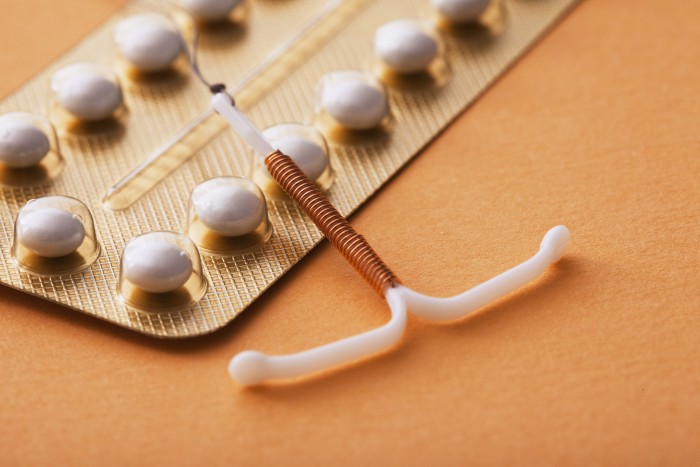
Women’s Health Week celebrates unique healthcare journeys and advocates for a care plan that’s tailored to meet each individual’s goals and comfort level. Family planning is highly personal, and contraceptive decisions should be customized to meet each woman’s needs.
“For many people with a uterus, a lot of time is spent avoiding pregnancy when it’s not the best time,” said Christy Boraas, MD, MPH, obstetrician/gynecologist at University of Minnesota Physicians (M Physicians). “Thankfully, there are a variety of contraceptive options and many more that are being developed every day.”
Just as the variety of contraceptives available is expanding, along with research and large-scale clinical trials, women’s bodies change as they age.
“While I might be the same person I was 20 years ago, my body isn’t,” Dr. Boraas said. “I counsel patients about new methods but also discuss potentially revisiting methods they’ve tried in the past, especially if their current method is no longer acceptable.”
One of the things to think about when choosing a birth control method is efficacy, or how effectively the contraceptive prevents pregnancy. One of the most common and readily available options is male condom use. While condoms don’t require a prescription, can be found at many drugstores and also help protect against sexually transmitted infections, they’re not the most effective method of preventing pregnancy. A study from Kaiser Permanente found that annually, condoms fail 18% of the time, meaning 18 out of 100 couples using only condoms would experience pregnancy after one year.
Primary Birth Control Options
Hormonal birth control pills are the most commonly used contraceptive in the U.S. – they’re effective, relatively inexpensive and have been around for a while. Most birth control pills have an estrogen and progestin component (both hormones that signal fluctuations in the menstrual cycle), which may cause side effects for some women.
“Estrogen might cause nausea, a sensation of bloating or breast tenderness,” Dr. Boraas said. “On the other hand, progestin might cause changes in mood, so patients should talk with their doctor about mental health concerns.”
When used correctly, birth control pills are 99% effective at preventing pregnancy, however, they have to be taken consistently at the same time daily. Skipping a dose can reduce efficacy, and remembering to take a pill can be a challenging new routine, which should be considered when deciding on a method. Similar options in terms of efficacy and mechanism of action include the birth control patch, which is replaced weekly and the birth control ring replaced every three weeks.
Another popular option is an intrauterine device (IUD), a small, T-shaped piece of plastic that fits inside the uterus and prevents pregnancy by using copper or releasing the hormone progestin. An IUD has to be inserted and removed by a healthcare provider, however once in place, it can stay in anywhere from three to twelve years depending on the brand. IUDs are very effective, and prevent pregnancy 99% of the time. The copper IUD is the only long acting, non-hormonal birth control method available.
“Hormonal IUDs release about one tenth of the hormone progestin compared to the pill,” Dr. Boraas explained. “The hormone levels IUD users are exposed to are magnitudes of order less.”
This might be helpful for individuals looking for a low-hormone method, or those concerned about the effects of progestin on other areas of the body, like appetite regulation.
“We have progesterone receptors all over the body, and some folks have them near appetite centers in the brain,” Dr. Boraas said. “Because of this, some people are more susceptible to weight gain with progestin methods.”
One of the most cited in terms of weight gain is the Depo-Provera injection, since it contains a large dose of progestin that wanes over the course of three months. When users get their shot on time every 12 weeks, it’s also 99% effective.
“In some people, it has no impact on weight and unfortunately, there’s no way to predict who’s going to have side effects,” Dr. Boraas added.
One of the most effective options is the birth control implant (called Nexplanon), a small rod that a doctor implants into the upper arm. Less than 1% of women get pregnant using this method, and it’s effective for five years. When it’s time for a healthcare provider to remove the implant, the area is numbed so there’s no pain, and it rarely leaves a scar. Like a hormonal IUD, the implant releases a lower dose of hormone than the pill, and it’s ideal for individuals who want long-term protection.
There are other forms of contraception, like emergency contraceptives, which can be used after sex to prevent pregnancy. While they shouldn’t be used as a regular, primary method, they have very few complications and some can be obtained over the counter.
Accessing Birth Control
During the COVID-19 pandemic, access to virtual visits and telehealth has increased dramatically at the M Health Fairview University of Minnesota Medical Center, making it easier to access family planning services.
“If it works better to have a telehealth appointment from home, we can do that,” Dr. Boraas said. “We encourage everyone to have an annual exam, but that’s not always necessary to get birth control. I think there are more ways to be flexible about access now, which is better for patients.”
While insurance coverage is a huge benefit in terms of accessing contraceptives, there are national organizations that offer fee for service or sliding scale payment models for those without it. At the end of the day, 86% of people will experience pregnancy at the end of a year if no method is used, so it’s important to consider the pros and cons with a healthcare provider.
“We want to listen to what people are experiencing in their bodies,” Dr. Boraas said. “With expanding options, we can find something that works.”